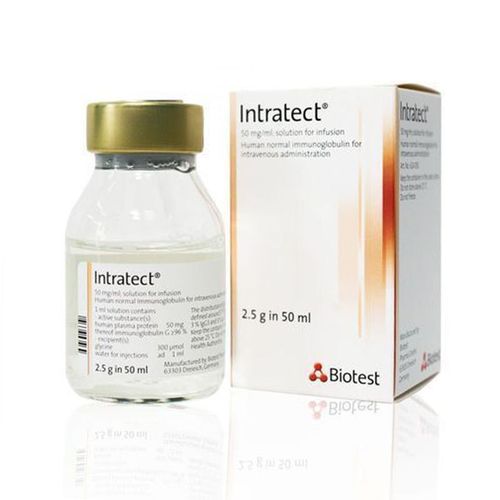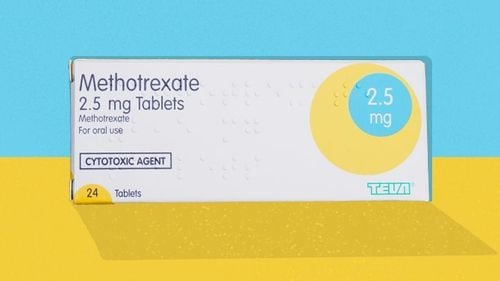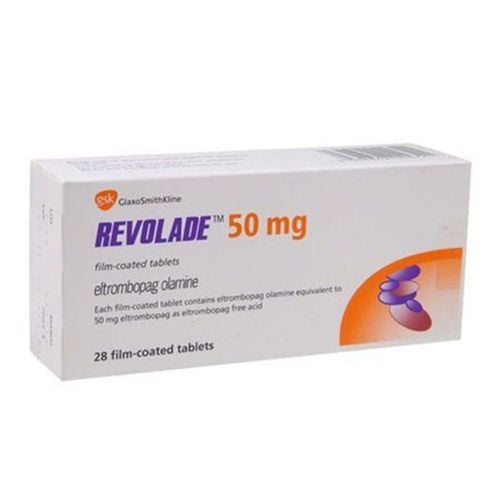This is an automatically translated article.
The article was written by Doctor Nguyen Ngoc Phuong Nam - Emergency Department - Vinmec Central Park International General Hospital.
Platelets are a type of cell in the blood of the human body. Platelets help initiate blood clotting during an injury and prevent bleeding.
1. What is thrombocytopenia hemorrhagic disease?
Thrombocytopenic purpura is an abbreviation for immune thrombocytopenic purpura, which is a type of immune pathology. Due to low platelets in the blood leading to life-threatening bleeding.
Normally when the body is invaded by a foreign object, for example, a bacteria, virus, parasite..., white blood cells will produce a substance called an antibody to fight these foreign objects.
When you have an autoimmune disease, your body mistakenly recognizes an organ or part of your body as a foreign object and produces antibodies to fight against that organ or part. In this case, the patient's body produces antibodies against the platelets.
These antibodies attach to platelets and cause platelets to be destroyed in the spleen, resulting in a decrease in the number of platelets in the blood and the body will be very prone to bleeding when the platelets are low.
2. Signs to recognize thrombocytopenia hemorrhagic disease?
The patient may not have any abnormal signs, just coincidentally a blood test found a low platelet count.
In most cases, patients find problems: petechiae, bruises, bleeding gums, nosebleeds, menorrhagia, hematuria, vomiting blood, or worst of all, coma due to bleeding brain blood....
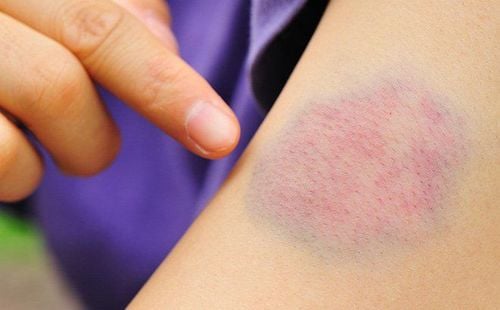
3. What tests are used to diagnose thrombocytopenic purpura?
Diagnostic tests include: complete blood count, peripheral blood smear, and myelogram.
A myelogram is an essential test to diagnose the disease: the doctor will use a needle to pierce the patient's pelvis to withdraw bone marrow fluid and examine it under a microscope to observe blood cells.
In addition, the doctor will perform a number of other tests to diagnose the cause of the disease, such as:
Tests for infectious diseases: Hepatitis B (HBsAg), Hepatitis C (anti HCV), HIV (antibody) HIV), serum for diagnosis of H.Pylori... Immunological tests: ANA, Anti DsDNA, LE cell, ANA 8 profile, TSH , FT3, FT4... Tests if there is anemia: Red blood cells Net , Serum Iron , Ferritin , Bilirubin , Haptoglobin , LDH , Direct Coombs test...
4. How is the disease treated?
The doctor starts treatment when: The patient's platelet count is below 20 x 109/L in the blood or when the patient's platelet count is below 30 x 109/L with a lot of mucosal bleeding.
First-line drugs of choice are corticosteroids.
When using these drugs, doctors often use high and prolonged doses to suppress the immune status with the aim of raising the number of platelets in the blood.
Corticosteroid drugs, when used for a long time, can cause some side effects: gastritis, increased blood pressure, increased blood sugar, water retention, osteoporosis, cataracts. Therefore, the patient must adhere to the treatment and the doctor will closely monitor and manage the complications and reduce the dose of corticosteroids in accordance with the disease condition.
In case of emergency: patients with life-threatening bleeding will be given the following drugs: intravenous gamma globulin, intravenous anti-D, high-dose corticosteroids. However, these drugs only have a short-term effect of raising platelets, the platelet count may decrease again after a while.
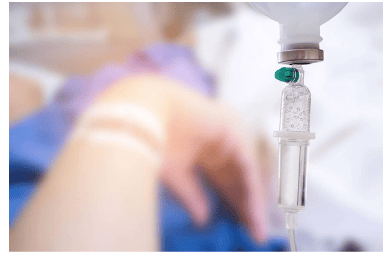
5. Is thrombocytopenia hemorrhagic disease dangerous? Is there a cure?
The disease can endanger the patient's life. When the platelet count is too low, the patient's body will be able to spontaneously bleed or bleed on a very slight collision. Cases of severe bleeding include: gastrointestinal bleeding (hematuria), urinary tract bleeding (red urine), meningoencephalitis (stroke).... However, the rate of meningoencephalitis is high. very low, only about 0.5-1% of patients.
Disease progression varies between adults and children. 70% of children will recover spontaneously after 3 months, 20% - 30% will develop chronic form. In contrast, in adults, the disease often progresses to chronic and often recurs many times.
In addition to the Corticosteroid group as the initial drug of choice, the treatment of thrombocytopenic purpura also has other treatment options such as:
Splenectomy: laparoscopic splenectomy is relatively safe, the response rate increases. requirements are 70-80% and long-term retention rates are 60-70%. However, after splenectomy, the patient's immune system will be weakened, once an infection, a very serious infection can occur. Therefore, before splenectomy, patients need to be vaccinated and after splenectomy, patients need to take preventive antibiotics for a long time (at least 2 consecutive years). In children, splenectomy is delayed until the child is older than 5 years of age. Rituximab: this is a new drug. The response rate to treatment is 60%, but the long-term retention rate is about 40%. The drug is relatively expensive and the response time is relatively long. This drug will be chosen by the doctor if the patient does not respond to the corticosteroid group and cannot have a splenectomy. Eltrombopag is a new drug that is indicated when the patient is resistant to the above methods. However, the drug is very expensive and has to be used for a long time. When the drug is stopped, the vast majority of cases will have low platelet counts again. Other classes of immunosuppressive drugs: In addition, when the patient does not respond to all of the above treatment options, the doctor may prescribe another immunosuppressive drug for treatment after considering the benefits. The therapeutic benefit outweighs its side effects.

6. Some other notes for patients with thrombocytopenia bleeding
Limit vigorous exercise: limit playing sports that have a lot of contact and impact such as soccer, volleyball, basketball... When the patient needs to extract teeth, do invasive procedures or have to The surgery also needs to clarify the history of bleeding and thrombocytopenia to the doctor to have a safe surgery plan. Menstrual monitoring for girls until puberty, if the amount of menstrual blood is heavy, it should be reported to the doctor. A doctor for appropriate treatment Women of childbearing age, if the condition is not stable, should avoid pregnancy because it may be unsafe for both mother and fetus Because of the dangerous nature and easy recurrence of the disease as well as the common side effects of the drug, so the treatment regimen must be adhered to
Please dial HOTLINE for more information or register for an appointment HERE. Download MyVinmec app to make appointments faster and to manage your bookings easily.






